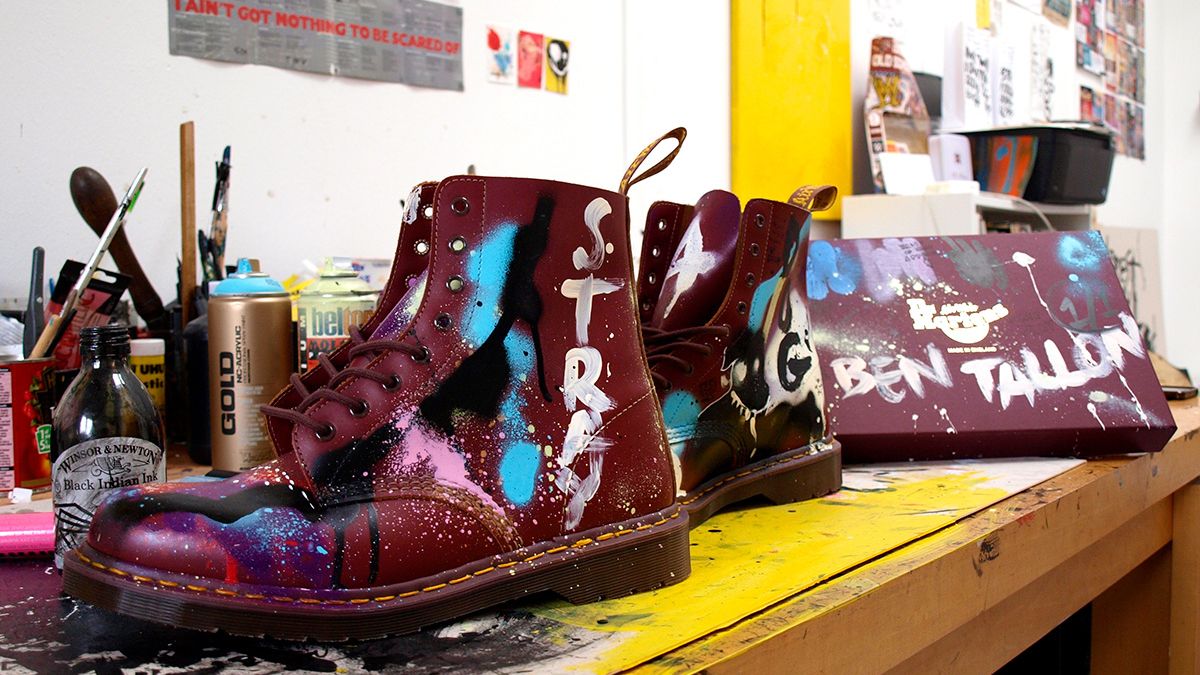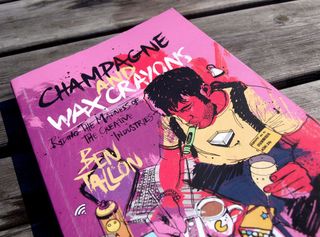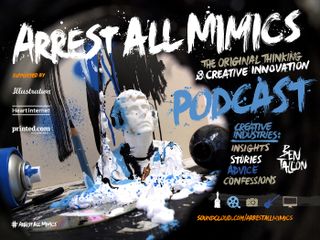4 first-class ways to make your design education count
How to avoid the negative patterns emerging at UK universities.

Studying for a degree in art and design can provide all sorts of opportunities if you make the most of the experience. Connecting with likeminded creatives, in a space awash with design expertise and quality resources, is not to be sniffed at. It seems shocking, then, that negative patterns are emerging at UK universities. But you can avoid them, to make your design education count.
My big break as a student came on a dark Thursday evening, when my course leader came by. Three of us were still working away and I was wound up tight, struggling not to feel the pressure of looming graduation.
He picked up a copy of The Guardian Weekend, at the time publishing a large quantity of illustration every Saturday. Grinning, he held open a double page feature artwork and handed it to me without saying a word.

In the pub, my tutor was always full of stories about eccentric illustrators and designers he’d met, and we’d developed a good rapport.
But I didn’t want to be spoon-fed. It felt important to earn my tutors' respect with hard work and initiative and they always responded to that, and met me half way.
The times in between our meetings became my opportunities to create new work, so that when we next met, they could give me crucial feedback.
I made the most of my design education, and reaped the rewards. Now it seems that creative education is in a state of flux, with empty seats, social media abuse, dangerous customer to business dynamics and difficulties convincing parents about a creative degree among the negative patterns emerging.
Get the Creative Bloq Newsletter
Daily design news, reviews, how-tos and more, as picked by the editors.
But you can still get ahead. Read on for my four tips for overcoming these.
01. Embrace the intangibles

It’s hard for parents to release their beloved into the wild. Trying to convince them that a creative degree is the right choice has always been difficult, thanks to its amorphous nature.
But conveying the benefits of independently led learning and experimentation costing so much is even harder. This can filter down to students, adding destructive pressure.
What must first be understood is that creative education is vastly different from more defined, academic degrees. Creativity is about ideas, individuality and personal exploration.
To have constant tutor support would bring no benefits to you because once you graduate, you’re on your own, and that is a crash landing for even the best prepared.
There will never be a module on how to sell a crystal skull for £1m, but by embracing these intangibles, your own unlikely epiphany becomes possible.
02. Use the studio space and visiting lecturers
The three years you have in a studio space with full-time hours is absolutely invaluable. Many of us in industry express a desire to have the time again, so use it wisely and own it.
Similarly, when I go to talk at universities to share my own stories from the industry, each eager student is often mirrored by an empty seat. Angry lecturers lament the lack of opportunism.
No matter how bad the hangover, there are drops of wisdom to be wrung from the people practising what you aspire to do. So turn up.
03. Don’t rely on your tutors

Ready access to lecturers is crucial. Ask them questions, seek criticism and suggestions, but never rely upon them. Their experience can elevate you beyond your years, but all they have to work with is you.
Your character, passions, view on the world and ideas have to be showcased in order for them to do their job and to help you grow. Sitting at a desk farting about on a phone and sulking won't cut it.
Furthermore, some lecturers find they have been subject of a social media thread – groups of students publicly complaining about their teaching methods or attitude, despite never having had an adult discussion about the concern.
Do that in industry and it’ll only serve to hurt you. There are good cop and bad cop tutors at art school, just like there will be lovely or difficult creative directors, editors and bosses in any workplace. Now is your chance to learn to get along with all of them.
04. Build relationships
Sadly, a customer to business dynamic rode into town with the lofty tuition fees. Several UK FE institutions, such as Norwich and Falmouth, have closed foundation courses. If this is indicative of a bigger picture then the chasm between the subservient nature of high school education and the prized independence of art college is a void to be bridged.
Here, you're expected to manage your own timetable and create project ideas. But you can manage this new-found independence by developing supportive, adult relationships with your lecturers.
Yes, you’re paying £9k per year, but the people who can help shape your future had no say in that decision, so develop a relationship with them. They don't see you as customers, but as people with creative potential who they would love to one day call peers.
Creative education is in flux, but the core is the same as it ever was and it is exactly what you make of it. Some of the greatest designers in our industry had only crumbs of what modern universities and art colleges provide, but they were determined to evolve as human beings and creative professionals.
There will never be – nor should there be – a blueprint for accessing this crazy industry. But higher education is one of the closest things you’ll have. Only you can make it count.
Related articles:

Thank you for reading 5 articles this month* Join now for unlimited access
Enjoy your first month for just £1 / $1 / €1
*Read 5 free articles per month without a subscription

Join now for unlimited access
Try first month for just £1 / $1 / €1

Ben Tallon is an illustrator, author, and host of The Creative Condition podcast, a weekly show exploring all aspects of creativity and the human condition.
He has made organic, energetic, impactful art and hand lettering for The New York Times, Channel 4, The Guardian, World Wrestling Entertainment, Bloomsbury Books, and The Premier League. His book, The Creative Condition is available to order now.